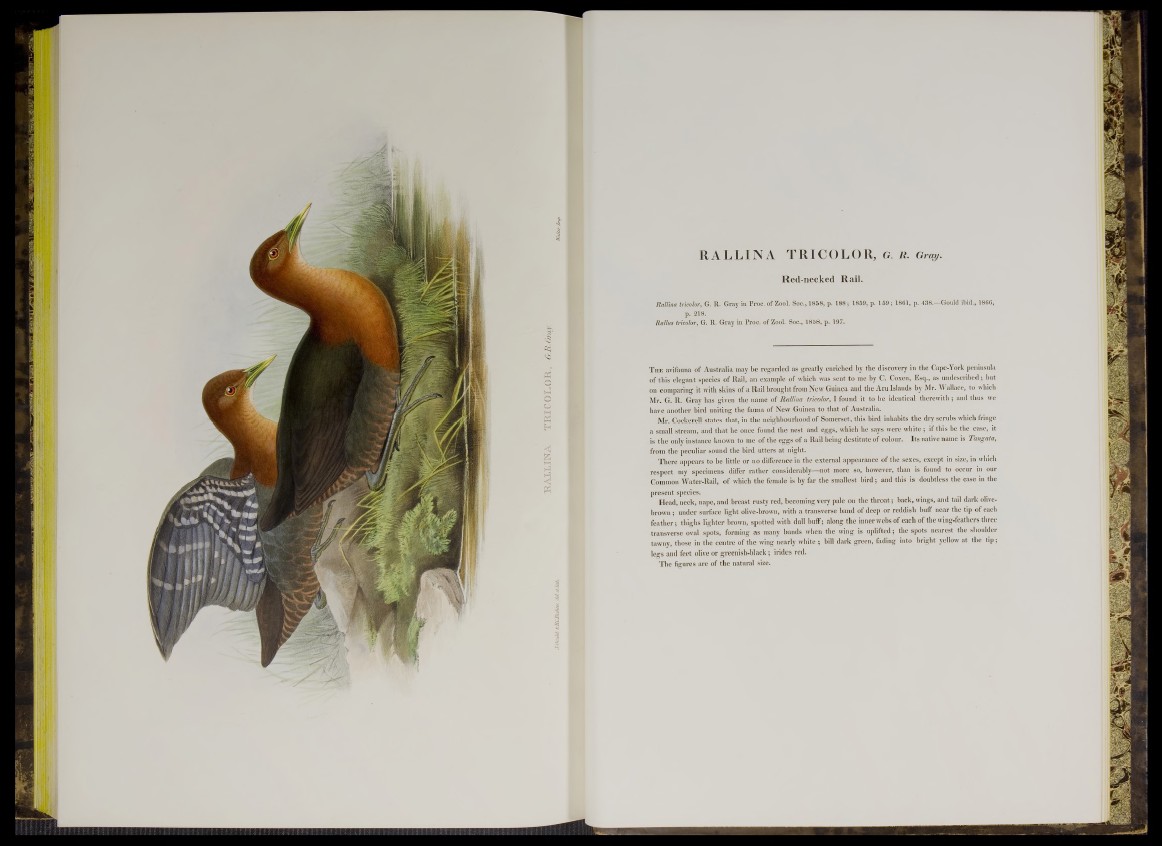
RAXXJRA. THI COLOR, &.R. Gray.
RALLINA TRICOLOR, G. R. Gray.
Red-necked Rail.
Rallina tricolor, G. R. Gray in Froc. of Zool. Soc., 1868, p. 188; 1859, p. 169; 1861, p. 438.—Gould ibid., 1866,
p, 218.
Rallus tricolor, G. R. Gray in Proc. of Zool. Soc., 1858, p. 197.
T he avifauna of Australia may be regarded as greatly enriched by the discovery in the Cape-York peninsula
of this elegant species of Rail, an example of which was sent to me by C. Coxen, Esq., as undescribed; but
on comparing it with skins of a Rail brought from New Guinea and the Aru Islands by Mr. Wallace, to which
Mr. G. R. Gray has given the name of Rallina tricolor, I found it to be identical therewith ; and thus we
have another bird uniting the fauna of New Guinea to that of Australia.
Mr. Cockerell states that, in the neighbourhood of Somerset, this bird inhabits the dry scrubs which fringe
a small stream, and that he once found the nest and eggs, which he says were white ; if this be the case, it
is the only instance known to me of the eggs of a Rail being destitute of colour. Its native name is Tangata,
from the peculiar sound the bird utters at night.
There appears to be little or no difference in the external appearance of the sexes, except in size, in which
respect my specimens differ rather considerably—not more so, however, than is found to occur iu our
Common Water-Rail, of which the female is by far the smallest b ird ; and this is doubtless the case in the
present species.
Head, neck, nape, and breast rusty fed, becoming very pale on the th ro a t; back, wings, and tail dark olive-
brown ; under surface light olive-brown, with a transverse band of deep or reddish buff near the tip of each
feather; thighs lighter brown, spotted with dull buff; along the inner webs of each of the wing-feathers three
transverse oval spots, forming as many bands when the wing is uplifted; the spots nearest the shoulder
tawny, those in the centre of the wing nearly white ; bill dark green, fading into bright yellow at the tip ;
legs and feet olive or greenish-black; irides red.
The figures are of the natural size.